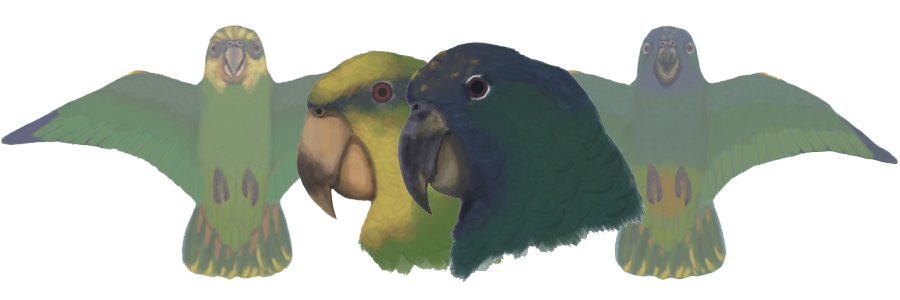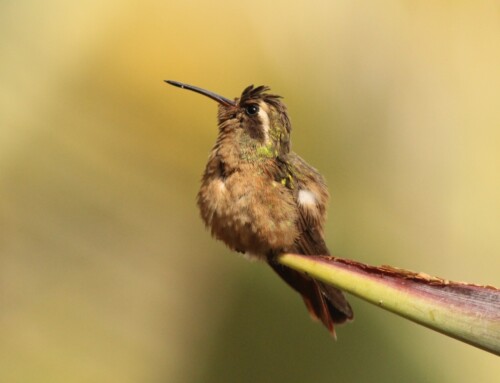LINKED PAPER
Successful hybridization between non-congeneric parrots in a small introduced population. Hernández-Brito, D., Tella, J.L., Carrete, M. & Blanco, G. 2021 IBIS. DOI: 10.1111/ibi.12936 VIEW
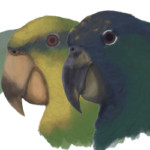 One of first images coming to mind when thinking about parrots is one of these birds in a cage. This is however not completely unusual because they are among the most prized pets in the international wildlife trade. Consequently, at least 259 species of parrots have been internationally traded worldwide, while about 60 species have established exotic or even invasive populations (Menchetti & Mori 2014, Cardador et al. 2017). Although during my PhD I mainly focused on the most successful invasive parrot species, the Rose-ringed (Psittacula krameri) and the Monk (Myiopsitta monachus) Parakeets, other parrot species such as Amazons (genus Amazona) also show exotic populations but in low-frequency.
One of first images coming to mind when thinking about parrots is one of these birds in a cage. This is however not completely unusual because they are among the most prized pets in the international wildlife trade. Consequently, at least 259 species of parrots have been internationally traded worldwide, while about 60 species have established exotic or even invasive populations (Menchetti & Mori 2014, Cardador et al. 2017). Although during my PhD I mainly focused on the most successful invasive parrot species, the Rose-ringed (Psittacula krameri) and the Monk (Myiopsitta monachus) Parakeets, other parrot species such as Amazons (genus Amazona) also show exotic populations but in low-frequency.
When species are introduced outside their native geographic ranges, they deal with different barriers that arise through each one of the steps of the invasion process (Blackburn et al. 2011). One of these barriers is their own population size, due to incipient exotic populations being mostly small, so they are more likely to suffer from the effects of demographic and environmental stochasticity. Besides, the shortage of potential mates as a mechanism of the Allee effect is frequent in small populations (Luquet et al. 2011), which increases the risk of population extinction.
So, how can exotic species overcome this limitation? Well, there are plenty more fish in the sea and hybridization with sister, generally congeneric species, could be an effective solution (Blackburn et al. 2009). For instance, several Amazon parrot species have hybridized with other congeneric species after the introduction (Mori et al. 2017), thus facilitating their population growth. However, what if potential mates are non-congeneric species?
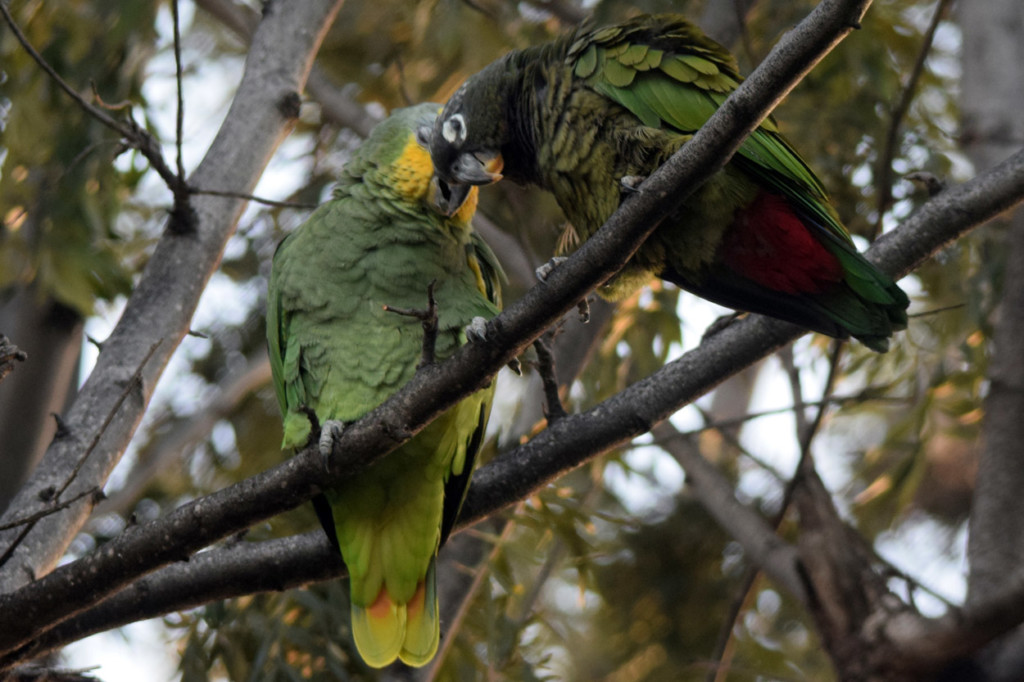 Figure 1 Non-congeneric breeding pair formed by Orange-winged Amazon Amazona amazonica and Scaly-headed Parrot Pionus maximiliani. © Dailos Hernández-Brito
Figure 1 Non-congeneric breeding pair formed by Orange-winged Amazon Amazona amazonica and Scaly-headed Parrot Pionus maximiliani. © Dailos Hernández-Brito
We monitored an unusual interspecific social group of exotic parrots in Tenerife (Canary Islands, Spain) in 2013-2019. This group mainly includes Orange-winged Amazons (Amazona amazonica) together with solitary individuals of other parrot species. In the same period, we also monitored two solitary Orange-winged Amazons introduced in other areas of Tenerife and Seville (southern Spain), which interact with other exotic parrots established in these areas.
During the study period, we only detected one breeding pair within the interspecific group from Tenerife and this consisted of a male Orange-winged Amazon and a female Scaly-headed Parrot (Pionus maximiliani). This non-congeneric mate had hybrid offspring for five consecutive years, thus increasing the population size.
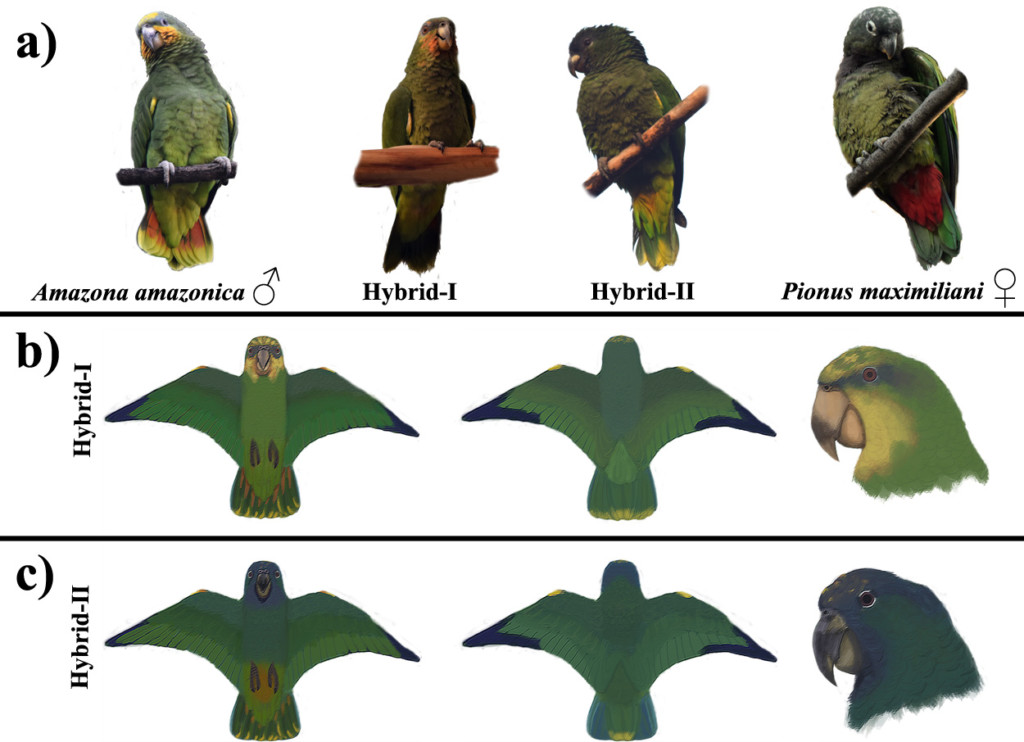 Figure 2 Parental species formed by Orange-winged Amazon Amazona amazonica and Scaly-headed Parrot Pionus maximiliani, as well as their hybrid offspring (Hybrid-I and Hybrid-II): (a) photographs of the parental pair and hybrid types; (b, c) dorsal, ventral and head views of hybrids. Illustrations and photos by Dailos Hernández-Brito
Figure 2 Parental species formed by Orange-winged Amazon Amazona amazonica and Scaly-headed Parrot Pionus maximiliani, as well as their hybrid offspring (Hybrid-I and Hybrid-II): (a) photographs of the parental pair and hybrid types; (b, c) dorsal, ventral and head views of hybrids. Illustrations and photos by Dailos Hernández-Brito
Hybrids were chiefly grouped in two distinctive phenotypes that resembled the features of parental species, such as general body colouration. However, other traits were intermediate such as the colour pattern of wing and tail feathers, as well as unique traits of parents being present in both phenotypes.
Regarding solitary Orange-winged Amazons, they turned out to be males that attempted to mate with female Monk and Rose-ringed Parakeets in Tenerife and Seville, respectively. Although these breeding attempts did not produce hybrid offspring, both pairs were stable during several years. Curiously, both male Amazons displayed unusual nesting behaviours such as nest building together with the female Monk Parakeet and parental care to the female Rose-ringed Parakeet offspring.
 Figure 3 Interspecific mated pairs formed by Orange-winged Amazons with (a) a Monk Parakeet Myiopsitta monachus (b) a Rose-ringed Parakeet Psittacula krameri. © Dailos Hernández-Brito
Figure 3 Interspecific mated pairs formed by Orange-winged Amazons with (a) a Monk Parakeet Myiopsitta monachus (b) a Rose-ringed Parakeet Psittacula krameri. © Dailos Hernández-Brito
Overall, our observations suggest that the formation of interspecific pairs of non-congeneric parrot species is not rare in the absence of conspecifics. This unusual hybridization between non-congeneric species promotes a population rescue in the early steps of invasion (Luquet et al. 2011) that could facilitate the establishment of Orange-winged Amazons in Tenerife. However, it is still too early to know if hybrids may breed in the not too distant future, so we will continue monitoring them to record hybrid fertility and their role in population growth.
My PhD highlights the importance of considering unexpected interspecific interactions in the fate of exotic parrot species. Thus, our report provides more information about the status of exotic Amazon populations that is poorly known (Mori et al. 2017). Moreover, hybridization could have additional conservation concerns in areas where exotic Amazons coexist with native parrot species, especially threatened species, in which potential interspecific hybridization may pollute the genetic reservoir of the natives (Blackburn et al. 2009), such as the case of the critically endangered Puerto Rican Amazon (Amazona vittata).
References
Blackburn, T.M., Lockwood, J.L. & Cassey, P. 2009. Avian invasions: the ecology and evolution of exotic birds. In Oxford avian biology series. Vol. 1. New York: Oxford University Press. VIEW
Blackburn, T.M., Pyšek, P., Bacher, S., Carlton, J.T., Duncan, R.P., Jarošík, V., Wilson, J.R.U. & Richardson, D.M. 2011. A proposed unified framework for biological invasions. Trends in Ecology and Evolution 26: 333-339. VIEW
Cardador, L., Lattuada, M., Strubbe, D., Tella, J.L., Reino, L., Figueira, R. & Carrete, M. 2017. Regional bans on wild‐bird trade modify invasion risks at a global scale. Conservation Letters 10: 717-725 VIEW
Luquet, E., Vorburger, C., Hervant, F., Joly, P., Kaufmann, B., Schmeller, D.S., Léna, J.P., Grolet, O., Konecny, L. & Plénet, S. 2011. Invasiveness of an introduced species: the role of hybridization and ecological constraints. Biological Invasions. 13: 1901-1915. VIEW
Menchetti, M. & Mori, E. 2014. Worldwide impact of alien parrots (Aves Psittaciformes) on native biodiversity and environment: a review. Ethology Ecology and Evolution. 26: 172-194. VIEW
Mori, E., Grandi, G., Menchetti, M., Tella, J.L., Jackson, H.A., Reino, L., van Kleunen, A., Figueira, R. & Ancillotto, L. 2017. Worldwide distribution of non–native Amazon parrots and temporal trends of their global trade. Animal Biodiversity and Conservation. 40: 49-62. VIEW
Image credit
Top right: Illustrations of two hybrid offspring phenotypes from interspecific breeding between Orange-winged Amazon and Scaly-headed Parrot. © Dailos Hernández-Brito


